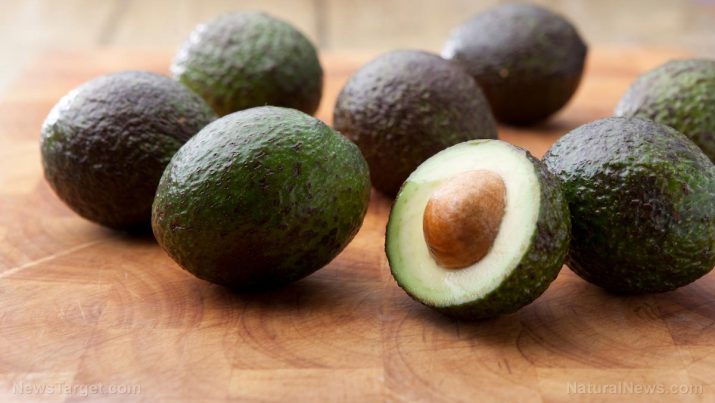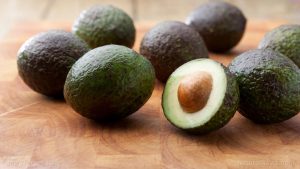
Monounsaturated fat sources, health benefits and uses
Wednesday, September 20, 2017 by Jhoanna Robinson
http://www.naturalpedia.com/monounsaturated-fat-sources-health-benefits-and-uses.html

Fats are made from a chain of carbon and hydrogen atoms. How these atoms are chemically bonded together determines what type of fat it will be. Fats can be classified as monounsaturated fats (or monounsaturated fatty acids) when their carbon atoms are bonded to hydrogen atoms all but at a single point, where there is a double bond between two of the carbon atoms.
To put it simply, the carbon atoms are not fully saturated with the hydrogen atoms (so they are “unsaturated”) but only at one point (hence the name “mono”).
Common names for monounsaturated fats that occur normally in foods include oleic acid, erucic acid, gadoleic acid, myristoleic acid, nervonic acid, and palmitoleic acid. Like saturated fatty acids, the numeric name of monounsaturated fats are even-numbered. The odd-numbered monounsaturated fats are seldom found in foods.
Monounsaturated fats have a single double (=) bond between two carbon atoms; meaning that since oleic acid has a numeric name of 18:1n9, it is 18 carbon atoms in length and there is a single (:1) double bond. There are also nine carbon atoms from the omega (n) end of the molecule. As such, the numeric names of the different kinds of monounsaturated fats are as follows: erucic acid – 22:1n9; gadoleic acid – 201n11; myristoleic acid – 16:1n5; nervonic acid – 24:1n9; and palmitoleic acid – 16:1n7.
While we have an inkling to believe that we need carbohydrates for energy and protein to build and maintain the body’s cells, nobody is inclined to think that dietary fat can bring some health benefits for the body. It is always seen as the macronutrient to avoid, as evidenced by the popularity of low-fat diets and low-fat foods over the years.
However, some fats can be good for you, provided that they are the monounsaturated kind. In recent years, monounsaturated fats have taken their place alongside the Mediterranean diet as being the purveyor of nutritional benefits.
Rich sources of monounsaturated fats include avocados; oils such as olive oil and rapeseed oil; nuts such as almonds, brazil nuts, and cashew nuts; and seeds such as pumpkin seeds and sesame seeds.
Medicinal uses for monounsaturated fat
In contrast with saturated fatty acids, monounsaturated fats lower blood cholesterol levels that are harmful for the body, such as the low-density lipoprotein (LDL), which causes blockage in your artery walls and thereby restrict blood flow through them. With the removal of LDL in the body, the risk of heart disease lessens, keeping the heart and organs optimally-functioning and at the same time keeping blood pressure stable.
Monounsaturated fats are an excellent source of fat-soluble vitamins that include vitamins A, D, E, and K. They aid the body in absorbing essential minerals such as phosphorus and calcium.
Monounsaturated fat has antioxidant properties. It helps protect cells from oxidative damage.
Monounsaturated fat helps cells control the body’s absorption of glucose via the presence of a substance called adinopectin, thus improving your cell’s sensitivity to insulin. This is a welcome development for diabetics who want to manage their blood glucose levels.
Monounsaturated fat has anti-inflammatory properties. It disrupts the activity of leukotrienes, which are naturally-produced molecules that cause inflammation. This is a good news for arthritis sufferers because eating foods that are rich in monounsaturated fats can help decrease the pain and stiffness that they are feeling.
Monounsaturated fat has cancer-fighting elements. These include the polyphenols, flavonoids, and squalene that are found in olive oil, a rich source of monounsaturated fats.
Body systems supported by monounsaturated fat
Monounsaturated fat is good for the ocular system. It keeps your vision healthy.
Monounsaturated fat is good for the cardiovascular system. It helps the blood clot and aids in the flow of blood, thus allowing the heart to exert not too much effort when pumping.
Where to learn more
- Boost good cholesterol with monounsaturated fats
- Monounsaturated fats are essential to unlock nutrients from vegetables
- 5 Reasons Eating An Avocado Everyday Improves Health
- Top 8 Healthy Fats to Include in any Diet, be it Muscle Building or Weight Loss
- 7 Foods that Fight Inflammation and Belly Fat
Summary
Monounsaturated fat has anti-inflammatory and antioxidant properties.
Monounsaturated fat has cancer-fighting elements.
Monounsaturated fat is good for the ocular and cardiovascular systems.
Sources include:
Tagged Under: Tags: monounsaturated fat






